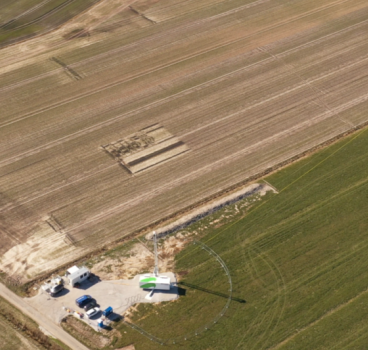Construction transport – and its massive carbon footprint
The construction industry carries a significant environmental burden and in spite of numerous attempts to go green, we still have a long way to go. It is not just about the manufacture of high polluting materials such as concrete and steel – it is also the way we ship these materials – often over vast distances with a massive carbon footprint to match, writes John Ridgeway.
Shipping and trucking building materials generates substantial levels of carbon dioxide (CO2) emissions, alongside other pollutants. Furthermore, the extraction and processing of these materials often leads to deforestation, water pollution, and resource depletion.
There is, of course, some good news and more and more green solutions are now available. It means we can demonstrate that the construction industry can significantly reduce its environmental footprint, if it chooses to do so – but will it?
Start to look a little closer at the problem and we can see that every stage of the transportation process, from loading and unloading to actual travel, releases pollutants into the atmosphere and huge quantities of greenhouse gasses. Long-distance transportation requires vast amounts of fossil fuels, further contributing to emissions and air pollution.
The World Green Building Council (WGBC) is a global voice for sustainable building practices. They recognise the environmental impact of transporting construction materials and actively advocate for solutions. According to the Council the concept of embodied carbon, which refers to the greenhouse gas emissions associated with the entire life cycle of a building material, including extraction, processing, transportation, and actual construction itself, is now a major problem accounting for 37% of the world’s annual carbon footprint.
The transportation of construction materials plays a major role in releasing embodied carbon emissions, with products often travelling long distances before reaching construction sites. This contributes to increased emissions and resource depletion.
Traditionally, building sustainability has focused on reducing operational carbon emissions (those generated during building use). However, the WGBC emphasises the importance of addressing embodied carbon, including those from material transportation and have launched various strategies to minimise the issue.
A specific breakdown showing the environmental impact of the transportation of construction materials is not readily available, however, there are some studies which offer insights. A 2020 report by the European Union (EU), estimated that construction and transportation of materials contributed 2% of total EU emissions. A life cycle assessment study on prefabricated wooden buildings in Quebec found that transportation contributed 13% to the total embodied carbon footprint, while material production accounted for 75%.
Getting precise data is difficult. Attributing specific emissions to material transport within the construction sector poses challenges – and here's why. Construction projects often involve complex supply chains with materials traveling through multiple locations before reaching the building site. We also know that transportation emissions data might not be readily available from all suppliers or manufacturers.
While obtaining a single, definitive figure for the construction industry's transportation emissions is difficult, we do know that the available data paints a clear picture of its significant contribution to the sector's overall carbon footprint.
As a result, the WGBC now advocate the need to prioritise locally available, sustainable materials, such as recycled aggregates or regionally sourced timber. This can significantly reduce transportation distances and associated emissions.
The Council also champions the principles of a circular economy in construction. This involves reusing and repurposing materials from demolition projects ("urban mining") or using bio-based materials like bamboo or hemp. They are also promoting transparency throughout the supply chain, allowing builders and architects to understand the embodied carbon footprint of different materials and choose more sustainable options.
There are, of course, other solutions. The construction industry has been aware for some time of the impact of transporting heavy materials, which is why we have seen a shift towards more sustainable trucking. Electric and hydrogen-powered vehicles offer a promising development for reducing emissions in construction transportation.
The adoption of electric and hydrogen trucks in construction is still in its early stages, but there's a growing movement towards sustainable transportation. Several construction companies are participating in pilot programmes testing electric and hydrogen trucks. For example, Skanska, a major construction and development company, is piloting electric concrete mixers in Europe.
Truck manufacturers are developing new electric and hydrogen models with longer ranges and improved capabilities. Companies like Volvo, Daimler, and Nikola are leading the charge. Some governments are also offering incentives to encourage the adoption of electric and hydrogen trucks. These incentives can include tax breaks, subsidies for charging infrastructure, and priority access to permits.
While the future looks promising, there are still challenges to overcome. Currently, electric and hydrogen trucks are more expensive than diesel versions. However, as technology advances and production scales up, the cost is expected to decrease.
The lack of charging stations for electric trucks and fuelling stations for hydrogen also presents a significant barrier. This means that for electric trucks, the limited range can be a concern for construction projects that require long journeys.
That said, electric and hydrogen-powered trucks hold significant potential for reducing the construction industry's transportation carbon footprint. While challenges remain, the growing commitment from companies, manufacturers, and governments signals a positive shift towards a cleaner and more sustainable future for construction transportation. For the moment, however, it is simply a question of watch this space.
Sources:
- The Green Truck Association: https://www.greentruckassociation.com/ - Promotes the adoption of electric and hydrogen trucks.
- CALSTART: https://calstart.org/ - A non-profit organization focused on clean transportation solutions, including electric trucks.
- Hydrogen Fuel Cells & Electrolysis - US Department of Energy: https://www.hydrogen.energy.gov/ - Provides information on hydrogen fuel cell technology and its applications.
- https://worldgbc.org/article/worldgbc-net-zero-carbon-buildings-commitment-expands-to-include-embodied-carbon/
https://www.sciencedirect.com/science/article/abs/pii/S0959652618337302
Additional Blogs

Wind-power for cranes – a construction game changer?
Wind energy, a clean and renewable resource, is emerging as a game-changer for the construction industry – with innovations that continue to surprise. By harnessing the power of the wind,...
Read moreAre empty desks a construction opportunity?
The COVID-19 pandemic fundamentally altered the way we are employed. With millions transitioning to remote work, office buildings across the Western world stand eerily empty, sparking a critical...
Read more

How new regulations are reshaping the construction industry
The construction industry has long been known for its focus on cost. Traditionally, the lowest bidder has nearly always secured the project, leading to concerns about cutting corners and compromising...
Read more